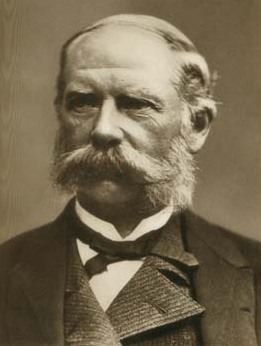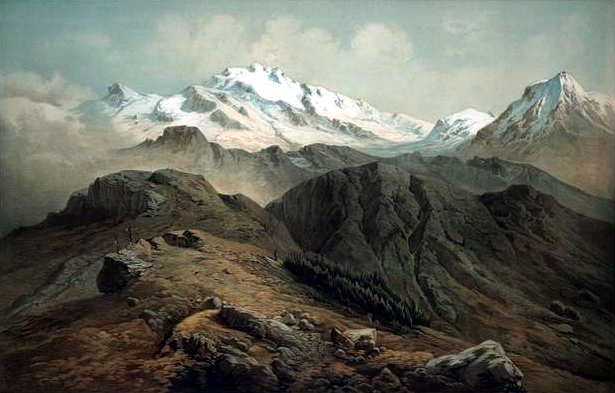Hermann Schlagintweit on:
[Wikipedia]
[Google]
[Amazon]

 Hermann Schlagintweit, Sakünlünski (13 May 1826 – 19 January 1882), also known as Hermann Rudolph Alfred von Schlagintweit-Sakünlünski, was a German explorer of Central Asia. Brothers Hermann,
Hermann Schlagintweit, Sakünlünski (13 May 1826 – 19 January 1882), also known as Hermann Rudolph Alfred von Schlagintweit-Sakünlünski, was a German explorer of Central Asia. Brothers Hermann,
 * ''Untersuchungen über die physikalische Geographie der Alpen'', 1850.
* ''Neue Untersuchungen über die physikalische Geographie und Geologie der Alpen'', 1854.
* Hermann, Adolph, Robert und Emil Schlagintweit Nachlass (854 - 1857.
* ''Untersuchungen über die physikalische Geographie der Alpen'', 1850.
* ''Neue Untersuchungen über die physikalische Geographie und Geologie der Alpen'', 1854.
* Hermann, Adolph, Robert und Emil Schlagintweit Nachlass (854 - 1857.
Weiteres Material zur Asienreise, Photographien und Zeichnungen von Menschen
'. BSB Schlagintweitiana IV.2. *
undertaken between the years MDCCCLIV. and MDCCCLVIII., by order of the court of directors of the Honorable East India Company / by Hermann, Adolphe, and Robert de Schlagintweit : with an atlas of panoramas, views and maps'', Leipzig : F.A. Brockhaus ; London : Trübner & Co., 1861-66. * ''Neue daten über den todestag von Adolph v. Schlagintweit, nebst bemerkungen über mussălmán’sche zeitrechnung'', München, Akademische buchdr. von F. Straub, 1869. * ''Reisen in Indien und Hochasien. Eine darstellung der landschaft, der cultur und sitten der bewohner, in verbindung mit klimatischen und geologischen verhältnissen. Basirt auf die resultate der wissenschaftlichen mission von Hermann, Adolph und Robert von Schlagintweit, ausgeführt in den jahren 1854-1858'', Jena, H. Costenoble, 1869-80. * ''Bericht über die ethnographischen gegenstände unserer sammlungen und über die raumanweisung in der K. Burg zu Nürnberg ...'', München, Buchdruckerei von F. Straub, 1878.
A detailed story of the adventures of the three brothers Hermann, Adolf and Robert in India and the Himalayas. ter {{DEFAULTSORT:Schlagintweit, Hermann German explorers Explorers of Central Asia 1826 births 1882 deaths German male writers

 Hermann Schlagintweit, Sakünlünski (13 May 1826 – 19 January 1882), also known as Hermann Rudolph Alfred von Schlagintweit-Sakünlünski, was a German explorer of Central Asia. Brothers Hermann,
Hermann Schlagintweit, Sakünlünski (13 May 1826 – 19 January 1882), also known as Hermann Rudolph Alfred von Schlagintweit-Sakünlünski, was a German explorer of Central Asia. Brothers Hermann, Adolph
Adolf (also spelt Adolph or Adolphe, Adolfo and when Latinised Adolphus) is a given name used in German-speaking countries, Scandinavia, the Netherlands and Flanders, France, Italy, Spain, Portugal, Latin America and to a lesser extent in vari ...
and Robert Schlagintweit were commissioned by the British East India Company to study the earth's magnetic field in South and Central Asia. They were the first Europeans to cross the Kunlun mountains
The Kunlun Mountains ( zh, s=昆仑山, t=崑崙山, p=Kūnlún Shān, ; ug, كۇئېنلۇن تاغ تىزمىسى / قۇرۇم تاغ تىزمىسى ) constitute one of the longest mountain chains in Asia, extending for more than . In the bro ...
and the first to explore the region between Karakoram
The Karakoram is a mountain range in Kashmir region spanning the borders of Pakistan, China, and India, with the northwest extremity of the range extending to Afghanistan and Tajikistan. Most of the Karakoram mountain range falls under the ...
and Kunlun.
Life
The eldest of the fiveSchlagintweit
Schlagintweit is a surname. Notable persons with that surname include:
* A German family of 5 brothers, all explorers and scholars:
**Hermann Schlagintweit (1826–1882), German explorer of Central Asia
**Adolf Schlagintweit (1829–1857)
** Eduar ...
brothers of Munich, along with his brother Adolf, he published a scientific study of the Alps in 1846–1848. They established their reputation with the ''Untersuchungen über die physikalische Geographie der Alpen'' (1850), and were afterwards joined by brother Robert, and jointly published ''Neue Untersuchungen über die physikalische Geographie und Geologie der Alpen'' in 1854.
In 1854, acting on the recommendation of Alexander von Humboldt, the East India Company commissioned Hermann, Adolf, and Robert to make scientific investigations in their territory, and particularly to study the Earth's magnetic field. For the next three years, they travelled through the Deccan, then up into the Himalayas, Karakoram
The Karakoram is a mountain range in Kashmir region spanning the borders of Pakistan, China, and India, with the northwest extremity of the range extending to Afghanistan and Tajikistan. Most of the Karakoram mountain range falls under the ...
, and Kunlun mountains
The Kunlun Mountains ( zh, s=昆仑山, t=崑崙山, p=Kūnlún Shān, ; ug, كۇئېنلۇن تاغ تىزمىسى / قۇرۇم تاغ تىزمىسى ) constitute one of the longest mountain chains in Asia, extending for more than . In the bro ...
.
Hermann and Robert were the first Europeans to cross the Kunlun, for which achievement Hermann received the title "Sakünlünski".
Hermann visited Nepal, then returned to Europe, where with Robert he published ''Results of a Scientific Mission to India and High Asia'' (four vols., 1860–1866). He spent the remainder of his life in literary and scientific work, both at Munich and at the Schloß Jägersburg castle near Forchheim.
Standard author abbreviation
Botanical collections
Botanical specimens collected by the Schlagintweit brothers are held at several herbaria around the world, including the Philadelphia Herbarium at the Academy of Natural Sciences (PH) and National Herbarium of Victoria at the Royal Botanic Gardens Victoria. In 1853, botanist Griseb. published ''Schlagintweitia
''Schlagintweitia'' is a genus of flowering plants belonging to the family Asteraceae.
Its native range is Europe. It is found in Austria, France, Germany, Italy, Spain and Switzerland.
The genus name of ''Schlagintweitia'' is in honour of Adol ...
'', a genus of flowering plants from Europe, belonging to the family Asteraceae, with its name honouring Hermann Schlagintweit and his brothers Adolf and Robert.
Selected works
 * ''Untersuchungen über die physikalische Geographie der Alpen'', 1850.
* ''Neue Untersuchungen über die physikalische Geographie und Geologie der Alpen'', 1854.
* Hermann, Adolph, Robert und Emil Schlagintweit Nachlass (854 - 1857.
* ''Untersuchungen über die physikalische Geographie der Alpen'', 1850.
* ''Neue Untersuchungen über die physikalische Geographie und Geologie der Alpen'', 1854.
* Hermann, Adolph, Robert und Emil Schlagintweit Nachlass (854 - 1857. Weiteres Material zur Asienreise, Photographien und Zeichnungen von Menschen
'. BSB Schlagintweitiana IV.2. *
undertaken between the years MDCCCLIV. and MDCCCLVIII., by order of the court of directors of the Honorable East India Company / by Hermann, Adolphe, and Robert de Schlagintweit : with an atlas of panoramas, views and maps'', Leipzig : F.A. Brockhaus ; London : Trübner & Co., 1861-66. * ''Neue daten über den todestag von Adolph v. Schlagintweit, nebst bemerkungen über mussălmán’sche zeitrechnung'', München, Akademische buchdr. von F. Straub, 1869. * ''Reisen in Indien und Hochasien. Eine darstellung der landschaft, der cultur und sitten der bewohner, in verbindung mit klimatischen und geologischen verhältnissen. Basirt auf die resultate der wissenschaftlichen mission von Hermann, Adolph und Robert von Schlagintweit, ausgeführt in den jahren 1854-1858'', Jena, H. Costenoble, 1869-80. * ''Bericht über die ethnographischen gegenstände unserer sammlungen und über die raumanweisung in der K. Burg zu Nürnberg ...'', München, Buchdruckerei von F. Straub, 1878.
References
;AttributionExternal links
A detailed story of the adventures of the three brothers Hermann, Adolf and Robert in India and the Himalayas. ter {{DEFAULTSORT:Schlagintweit, Hermann German explorers Explorers of Central Asia 1826 births 1882 deaths German male writers